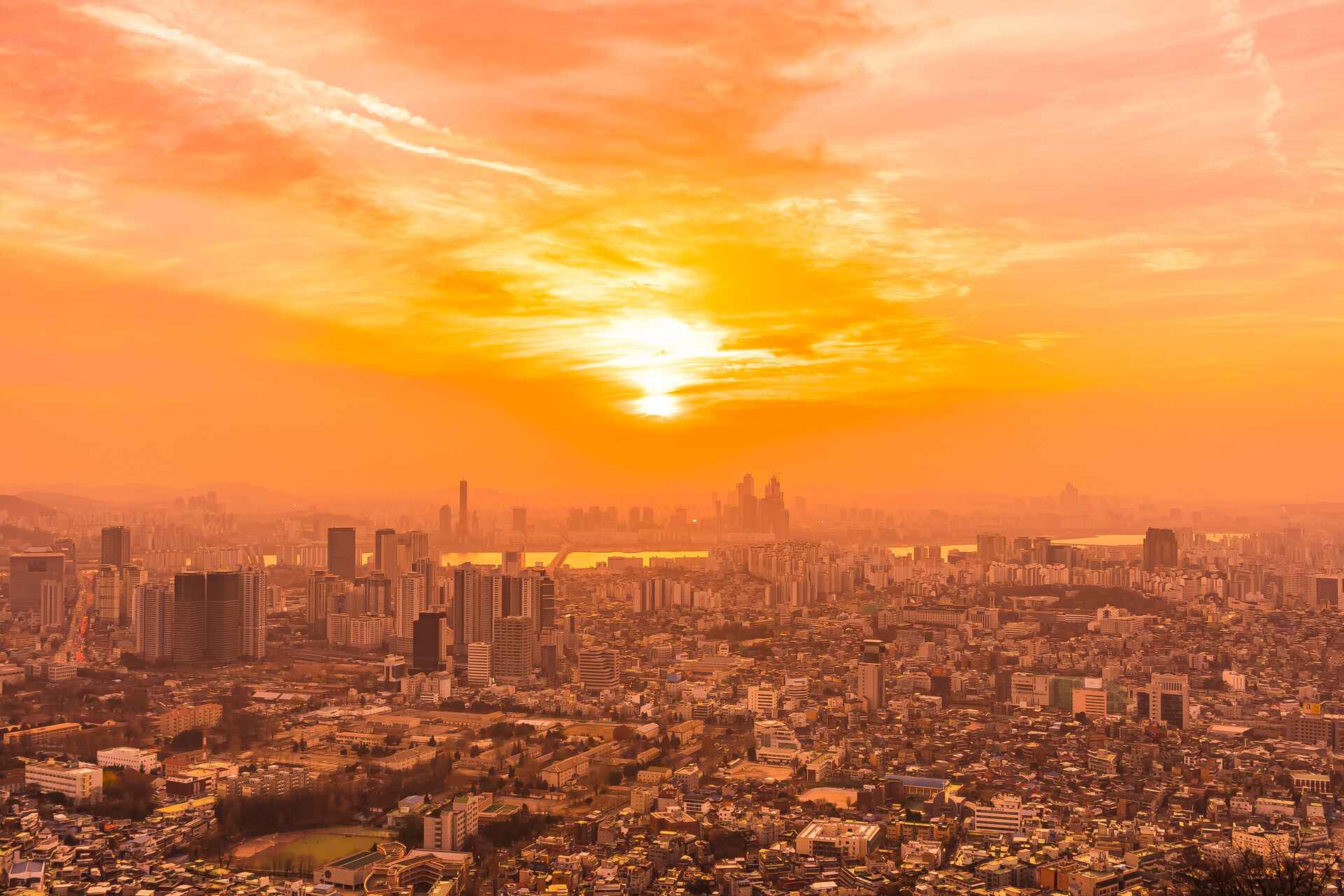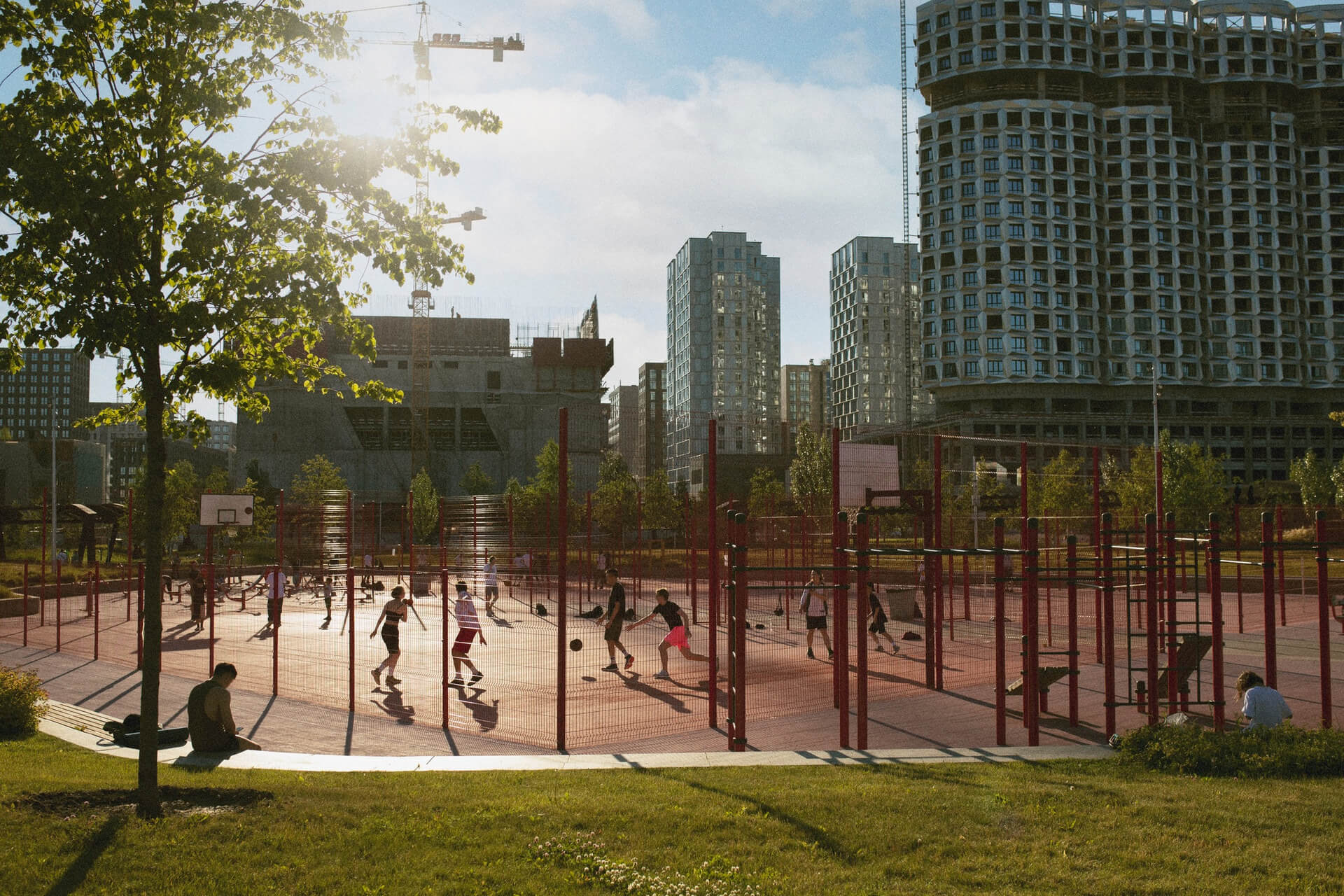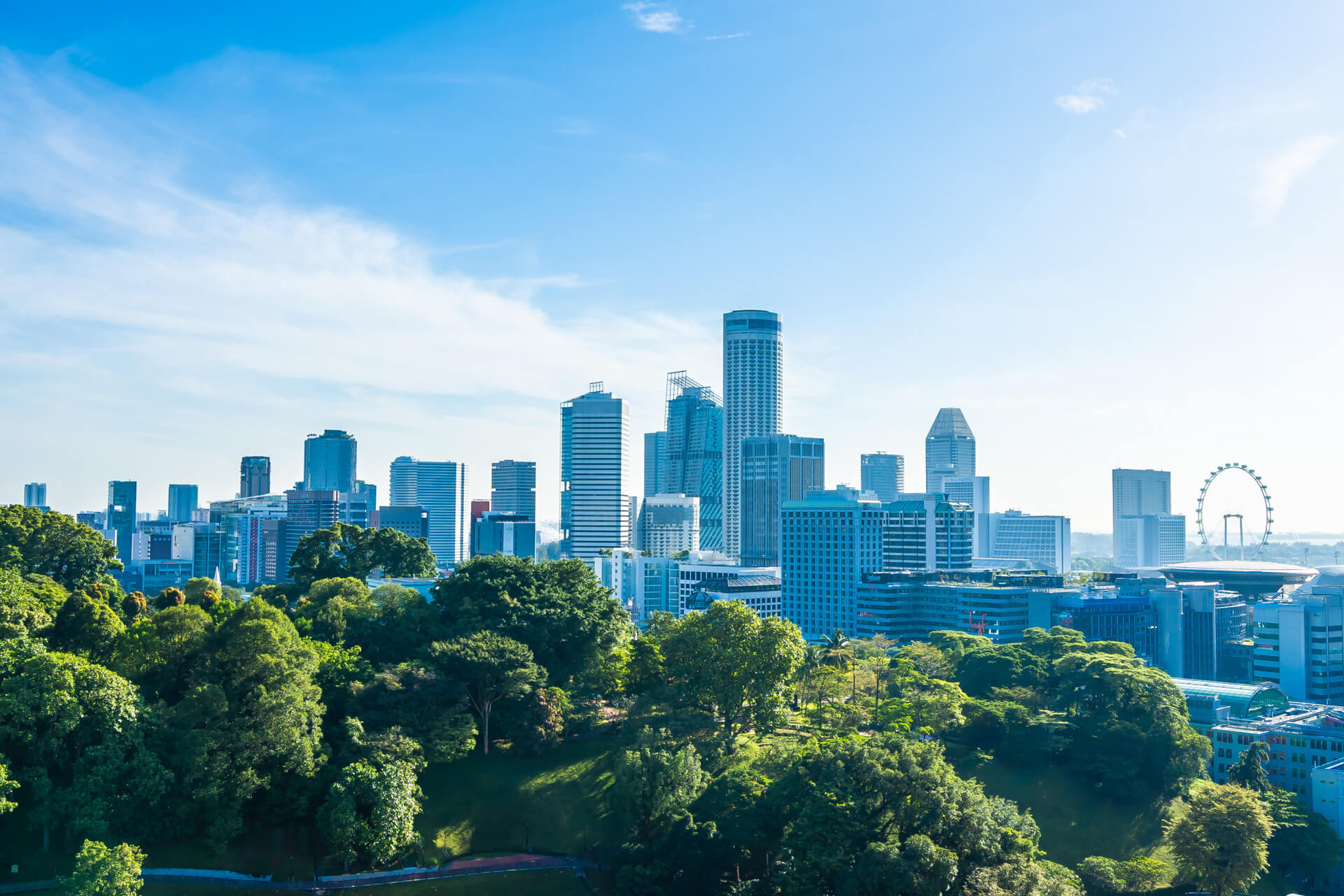What Causes an Urban Heat Island? An In-Depth Guide from Evergreen Infrastructure
Discover what causes an urban heat island and how materials, vegetation loss, and human activity contribute to rising city temperatures.
.webp)
Urban heat islands are formed by replacing trees and natural land with hard surfaces like concrete and asphalt. These materials absorb and hold heat. At the same time, vegetation is reduced or removed. That means there's less shade and less natural cooling through plants. Cities also produce extra heat from traffic, buildings, air conditioning, and other forms of energy use. As a result, urban areas become much hotter than nearby rural places. Understanding the causes helps us design cooler, healthier cities. Evergreen Infrastructure offers smart solutions like green roofs, living walls, and eco-friendly materials. These tools help reduce heat and build more comfortable, climate-resilient communities
Urban areas are getting hotter all over the world, and not just because of climate change.
A major culprit behind rising city temperatures is the urban heat island (UHI) effect.
An urban heat island is an urban area that is much hotter than nearby rural or suburban regions.
This phenomenon is most prominent at night and during heat waves. It happens when the heat stored in buildings and roads is slowly released back into the air.
Understanding what causes urban heat islands isn't just a scientific matter. It's a public imperative.
By doing so, we can design cities that are more livable, efficient, and resilient to climate pressures.
This article explores what causes an urban heat island. We'll also discuss how smart infrastructure can make cities cooler, safer, and more sustainable.
What Is the Urban Heat Island Effect?
The urban heat island effect arises from a combination of:
- Urban planning decisions
- Material usage
- Human activity
Trees, grasslands, and bodies of water are replaced with buildings, pavements, and cars.
Cities become heat sinks. They absorb and re-radiate thermal energy far more than their rural surroundings.
The UHI effect leads to increased electricity usage. It often creates strain on energy grids during peak hours.
Major metropolises like Tokyo, New York, Mexico City, and Delhi are prime examples.
They experience consistent heat island formation because of:
- Development density
- Minimal vegetation
- High traffic volumes
What Causes an Urban Heat Island?
Urban heat islands are not caused by one single factor.
They're the result of an array of interconnected design, behavioural, and climatic influences.
These influences include:
- Surface modification and material choices
- Lack of vegetation and green spaces
- Waste heat from urban activities
- Urban geometry and structure
- Atmospheric and climatic factors
- Human activity
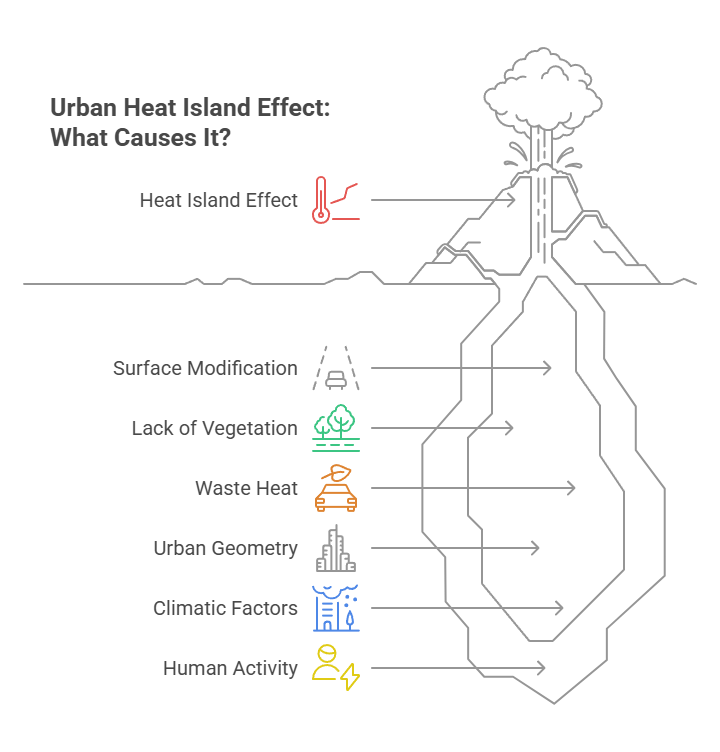
Surface Modification and Material Choices
One of the most significant causes of the UHI effect lies in the materials we use to construct cities.
Surfaces like asphalt, concrete, glass, and metal absorb large amounts of solar radiation.
Unlike forests or fields, they don't cool themselves through evaporation. They release heat slowly, keeping temperatures high even after sunset.
Urban roads and parking lots made of black asphalt can reach temperatures of 60°C (140°F). This contributes significantly to heat stress.
Cities with large expanses of impervious surfaces have low albedo. In other words, they reflect less sunlight and trap more heat.
The result is a self-perpetuating heating cycle that continues into the night.
Lack of Vegetation and Green Spaces
Greenery isn't just aesthetic. It plays a crucial role in regulating local climates.
Trees and plants absorb heat and release water vapour, naturally cooling their surroundings. This process is called evapotranspiration.
The result is a localised cooling effect that can lower surrounding air temperatures.
In urban cores where vegetation is sparse, the cooling effect is lost. Fewer trees mean less shade. Less ground vegetation means reduced evaporation.
The absence of vegetation also impacts air quality and human comfort.
Trees and plants act as natural air filters. They capture dust, pollutants, and carbon dioxide while releasing oxygen.
Without them, cities not only become warmer but also less breathable. This can worsen respiratory conditions like asthma and heat-related stress.
Green roofs, vertical gardens, and tree corridors can help counteract these heat effects.
These interventions have been shown to:
- Lower surface and air temperatures
- Improve biodiversity
- Support public health
- Reduce energy costs
- Beautify the surrounding area
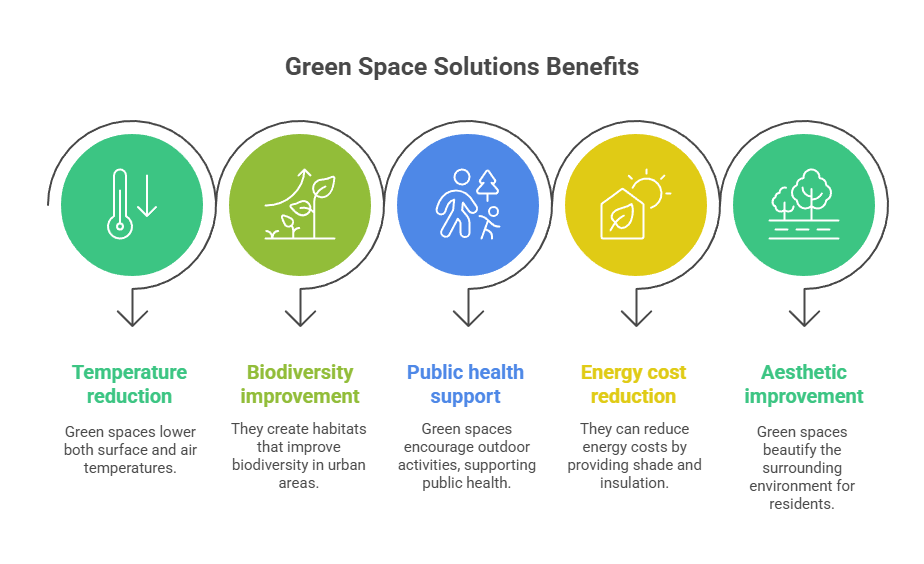
Green roofs provide insulation and cooling for buildings. Vertical gardens bring greenery to walls and facades.
Tree corridors and urban parks restore shade and airflow to hardscape-heavy areas.
Waste Heat from Urban Activities
Cities don't just absorb heat. They create it, too. Common sources of urban heat include:
- Cars
- Buses
- Trains
- Factories
- Air conditioning units
- Large groups of people
All these activities generate heat as a byproduct.
In high-density cities, this waste heat can raise local temperatures by several degrees. This happens especially in commercial zones or during peak commuting hours.
The problem is even worse in cities that rely heavily on air conditioning.
While AC units cool indoor spaces, they expel hot air into the street, warming the surrounding environment.
This creates a vicious cycle: the hotter it gets, the more energy people use to cool down. But that energy use releases even more heat into the environment, making the city even hotter.
Over time, this self-reinforcing loop becomes a major driver of the urban heat island effect.
Urban Geometry and Structure
The way a city is built has a big influence on how hot it gets.
Urban design affects how heat moves, how air flows, and how easily an area can cool down.
One of the most important concepts here is the "urban canyon effect."
This happens when tall buildings are built close together along narrow streets. They create a canyon-like space that traps heat in several ways:
- Heat gets stuck between buildings and doesn't escape easily.
- Airflow is limited, which means less wind to move heat out of the area.
- Surfaces reflect heat back and forth between walls, increasing temperatures.
- The sky is less visible, so heat can't radiate upward and disperse during the night.
These design features might be great for maximising real estate or blocking strong winds. But they also create serious problems when it comes to heat buildup.
Aside from trapping heat, urban geometry also affects:
- How sunlight hits the ground
- How shadows are cast
- If trees and green spaces can thrive
All these factors work together to shape the local microclimate.
Atmospheric and Climatic Factors
The atmosphere above a city also plays a key role in shaping the urban heat island effect.
Air pollution, humidity, and regional climate conditions can either worsen or soften the intensity of urban heat.
Polluted air is one of the biggest contributors.
When the air is full of particulates, smog, and greenhouse gases, it interacts with sunlight and moisture.
Pollutants trap heat closer to the ground, preventing it from escaping into the upper atmosphere.
This is sometimes referred to as a "heat dome" effect. Warm air gets stuck near the surface, increasing both daytime and nighttime temperatures.
In areas with high humidity, the problem gets worse.
Moist air holds more heat than dry air, and that heat doesn't dissipate easily, especially overnight.
As a result, cities stay warmer for longer, and people experience little relief from the heat, even after sunset.
On top of that, regional climate zones shape how extreme the urban heat island becomes.
The Role of Human Activity in Intensifying the Heat Island Effect
Beyond materials and layout, human behaviour plays a defining role.
Cities with high energy demand and a lack of climate-sensitive design experience more intense heat islands.
These include:
- Phoenix, USA: Sparse vegetation, high asphalt coverage, rapid suburban expansion
- Tokyo, Japan: Intense commercial activity and dense construction
- New Delhi, India: High population density, air pollution, and limited cooling infrastructure
Recognising how human choices fuel the UHI effect is key to long-term climate adaptation.
Comparing Solutions: How Evergreen Infrastructure Measures Up
Fighting the urban heat island effect requires innovative, scalable, and affordable interventions.
Evergreen Infrastructure stands apart through its systems-oriented approach to urban cooling.
We take a comprehensive and customised approach to green infrastructure. We do this by focusing on the following key areas:
1. Green Roofs
We design and install green roofs that transform unused rooftop spaces into thriving gardens.
These installations not only improve building aesthetics but also:
- Improve insulation, leading to energy savings
- Manage stormwater by absorbing rainfall
- Increase biodiversity by providing habitats for various species
One example is the Federation Square Biodiversity Green Roof project in Melbourne.
It shows how Evergreen Infrastructure worked closely with partners to develop a lightweight green roof system.
This solution met strict engineering requirements while still delivering strong environmental benefits.
2. Green Walls
Evergreen Infrastructure's green walls are more than just vertical gardens. They are integrated systems that:
- Regulate indoor temperatures by providing shade in summer and reducing heat loss in winter
- Improve air quality by filtering pollutants
- Maximise how much space is used in urban settings
Take a look at the Parkville Green Wall project.
It shows our ability to design and install biodiversity-rich green walls that offer multiple benefits to homeowners.
3. Urban Farms and Green Spaces
Beyond roofs and walls, Evergreen Infrastructure develops urban farms and green spaces that:
- Promote local food production
- Foster community engagement
- Improve urban biodiversity
Projects like the Urban Farm at CRC Sydenham prove our commitment to creating sustainable green spaces within urban landscapes.
4. Consulting and Asset Management
Understanding that green infrastructure requires ongoing care, we offer consulting services to:
- Provide tailored advice for green infrastructure projects
- Develop strategic maintenance plans to ensure longevity and performance
- Assist with navigating regulations and securing funding opportunities
Our asset management services ensure that green installations remain healthy, beautiful, and functional over time.
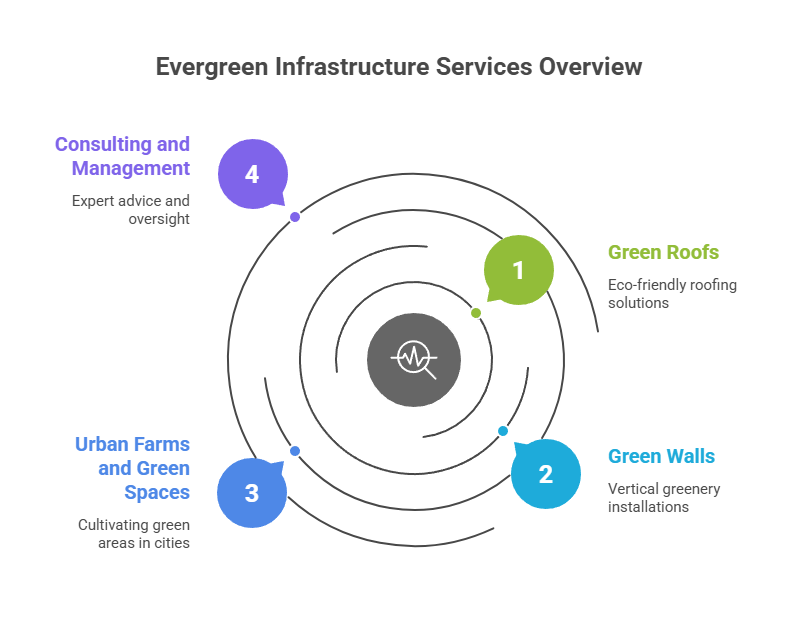
Understanding Urban Heat Island Causes
So, what causes an urban heat island?
The answer lies in the way we build, plant, and power our cities.
From the heat-retaining materials we use to the energy we consume, urban heat islands are a manmade challenge.
However, we can also reverse this issue with intentional, science-driven action.
Evergreen Infrastructure is more than a green builder. We're your partner in building climate-smart cities that thrive.
With proven success in designing living roofs, cooling corridors, and resilient materials, we help reduce heat stress and boost urban well-being.
Ready to reduce urban heat in your next project?
Contact Evergreen Infrastructure for a consultation and start designing a cooler tomorrow, today.
{{cta}}
We create green oases in urban settings
We'd love to discuss how we can partner to bring innovative, sustainable solutions to your urban environment.
.webp)
.webp)
.webp)
